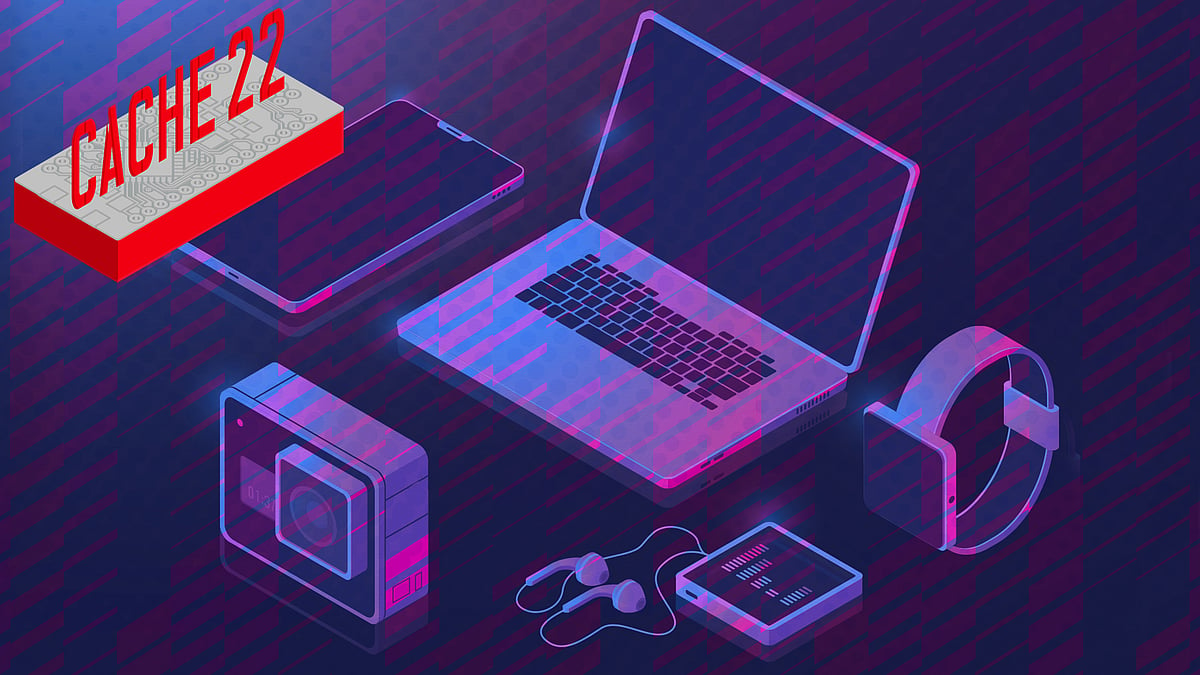Game of phones: A cheatsheet of what phone to buy at every price range
From budget phones to those above Rs 1 lakh, we’ve got you covered.
It’s been eight months since I wrote my last phone buying guide, and it is now sadly outdated and desperately in need of an update. Choosing a phone is, if anything, even harder than choosing a laptop because it is most people’s primary digital device and the number of options, especially in the budget segment, has shot up exponentially, without really improving on aspects of real choice for the consumer. Therefore, without further ado, let me get down to the recommendations.
Before I begin, I repeat my old disclaimer. I haven’t personally reviewed these models. These recommendations are based on a combination of (1) the specs the devices offer, (2) other professional reviews of the model where available, and (3) the experience of people who’ve used it where that information is available.
Also, as before, you could follow the recommendations in this piece and still get a dodgy phone. I hope that doesn’t happen but if it does, I have to disclaim any responsibility for it. Remember to scrutinise and make full use of the returns policy.
Which iPhone should I buy?
As an Android user and someone who vastly prefers the Android OS to iOS, I am unlikely to ever buy an iPhone myself. But that doesn’t mean there aren’t some attractive options from the fruit company.

The models available haven’t changed from the time the last guide was published, but the inability of Android phone makers to put up competitive models in the crucial roughly Rs 50,000 price point (I’m looking at you, OnePlus!) has meant that the iPhone 11 for Rs 48,999 (and even less with bank/card offers) looks even more compelling than it did eight months ago. There’s barely a sub Rs 50,000 Android phone that can compete with this. So, if you don’t mind iOS, this is the device to get.
The A13 processor in the iPhone 11 is more powerful than the current Android flagship processors and will serve you well for years to come. The relatively compact size (6.1” screen) and very capable cameras mean that apart from a performance improvement in the latest A14 processors that you’ll barely notice, you are unlikely to feel shortchanged vis-à-vis the more expensive iPhone 12 series.
That said, the iPhone 12 series are also very good phones and if you have the money to splash out on it, knock yourselves out.
What’s the cheapest phone worth buying?
I’m introducing this new category because I keep getting asked for recommendations in the “well below Rs 10,000” category. And while there are smartphones even in the Rs 5,000 range, those are all so severely compromised that I would struggle to recommend them.
Now, both Redmi and Realme, the budget stalwarts, have options at the Rs 6,999 price point. But Realme’s C20 offers the best processor of the lot and, at this price point, that’s pretty much the main difference worth looking for. The Helio G35 isn’t powerful, but will do the job for most basic tasks, and this should be a very usable phone, for online classes, and the like.
What’s a good phone under Rs 10,000?
The sad fact is that despite the plethora of models available at this price point, the quality of the choices in this range has gone down in the past year and a half. The no-longer-available Redmi Note 7 Pro which was usually Rs 10,999 (but available on sale for Rs 9,999 at times) sported the Snapdragon 675 processor which beats the current sub-10k mainstay, the Helio G80/G85, by a decent margin other than in gaming.
Anyway, among the Helio G80/G85 options, the Realme Narzo 30A is the cheapest option, coming in at Rs 8,999 and it ticks all the boxes. The Redmi 9 Prime would be another sensible choice, since it has broadly similar specs and, for Rs 1,000 more, it gives you 4 GB of RAM and 64 GB of storage (instead of 3 and 32).
Both the Micromax IN 1 (with a 1080p screen) and the Infinix Hot 10S (with a 90hz display) offer a bit more for the money, but being from less reputed manufacturers, I would be a little wary about quality control and customer support.
What’s a good phone under Rs 20,000?
As always, this is by far the most crowded segment in the Indian smartphone market and it feels like every other week there’s a new model launched in this segment. There’s little to differentiate the scores of models that crowd this segment, the best of them sporting a Snapdragon 7-series processor, one decent camera, and two or three additional mediocre cameras, a giant screen, and a giant battery.
One model that does stand out a little bit is the Poco X3 Pro, which sells at Rs 18,999 at the time of writing. It offers a Snapdragon 860 processor. While this is a two-year-old Snapdragon 855 with a bit of spit and polish, it still runs circles around the processors usually found in phones in this price segment. So, if you want the best performance and gaming in this budget, this is the phone to buy. The cameras are not great, so if photography is a priority this may not serve you very well.
If cameras are a priority, the Redmi Note 10 Pro Max for Rs 19,999 is probably your best bet. It won’t give you the performance of the Poxo X3 Pro, but it’s still a solid package for the price. For a slightly less capable camera and otherwise similar experience, you can also consider the Redmi Note 10 Pro for Rs 2,000 less.
If you want to snag a good value option below Rs 15,000, the Motorola G40 Fusion offers solid performance and a stock Android experience (albeit mediocre cameras) for Rs. 13,499.

What’s a good ‘budget flagship’ under Rs 30,000?
While this segment may not be as crowded as the one before, there’s a little more in the way of actual choice out here.
Let me get my pick of this lot out of the way first. No, it’s not the most powerful one, not by far. In fact, its Snapdragon 730G chip is equalled by phones less than half its price, but just for the compact size, excellent camera, and guaranteed quick updates, the Pixel 4a would be my phone of choice. While it’s selling now for Rs 29,999, it often dips to Rs 26,999 which makes it a bit more palatable.
Now with that out of the way, if it’s the absolute maximum performance per rupee, there are two ways to go about it. Option one is to get a phone sporting the Mediatek Dimensity 1200 chipset, like the Realme X7 max for Rs 25,275 or the Poco F3 GT for Rs 26,999. Both feature high-end specs, a powerful chipset, and good-but-not-great cameras for an affordable price. Now, if you want the same performance along with a properly good camera, the newly launched OnePlus Nord 2 for Rs 29,999 is a great choice. Apart from some image-processing foibles, this is all round a proper budget flagship.
Option two is to get a Mi 11X. For Rs 29,999 it features the Snapdragon 870 chipset, which gives you the absolute best performance you can get for this money, but it is let down by a somewhat mediocre camera.
Now, if you want the most versatile imaging capabilities combined with a very good set of other specs, you could also consider the Realme X3 Super Zoom for Rs 23,999. It’s the only phone under Rs 25,000 with a periscope telephoto and by all accounts it’s a very good camera for the money. The Snapdragon 855 means you will have solid performance for some time to come.
What’s a good phone between Rs 40,000 and Rs 50,000?
As I mentioned above, the best option is the iPhone 11. Now, if you can’t stomach iOS (like me), then the one that I would pick is the Samsung Galaxy S20 FE 5G which is selling for Rs 41,999 right now and offers a good set of cameras including a telephoto, and all the specs you would need in a flagship, including water-resistance and wireless charging.
What about the outright flagships?
I am personally of the view that spending more than Rs 50,000 on a phone is a waste of money, considering how much performance and value the budget phones offer. That said, if you have the money to spend, here’s what you could consider.
The main reason people buy outright flagships is for imaging quality, because virtually everything else is equally competent in much cheaper models. Therefore it’s worth looking at which phones take the absolute best pictures around.

The cheapest flagship-grade imager is the Vivo X60 Pro+ at Rs 69,999. With top of the line specs and a versatile and extremely capable set of imaging units, the only real complaint about the phone is Vivo’s funtouch OS and the bloatware it comes with.
The similarly priced Mi 11 Ultra from Xiaomi is equally (if not more) powerful, but after a limited launch, the phone appears to not be available any more and it’s unclear if it ever will be again.
Which then takes us right above the Rs 1 lakh mark with the iPhone 12 Pro and the Samsung Galaxy S21 Ultra. The iPhone has the more powerful processor, better video and a more ergonomic size, but the Samsung absolutely wins on camera versatility, telephoto reach and sheer size, not to mention bells and whistles.
I’ll give an honourable mention here to the Samsung Galaxy S21 which for Rs 69,999 doesn’t have as good or versatile a camera setup as the Vivo, but offers a more compact size and a refined and cohesive software experience.
The future
As always, there are great phones right around the corner. The iPhone 13 series is coming out in a couple of months, as are Samsung’s latest foldables, and Asus’s compact and capable Zenfone 8. The Pixel 6 and Samsung S21 FE are also on the horizon, but their arrival in India is doubtful. But as things stand, the models I’ve listed above should be good value at their price points. If you think I’ve missed any, please tweet them out to me.
Contact the author on Twitter @vinayaravind.
 Looking to buy a laptop? We got you covered
Looking to buy a laptop? We got you covered Looking back, 2020: Apple laptops made a leap, phones got smaller, wearables better
Looking back, 2020: Apple laptops made a leap, phones got smaller, wearables better